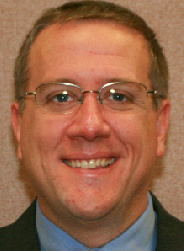Treating only garden-variety OSA will stunt success. Whether you want to launch a PAP adherence program or a cognitive behavioral therapy group, apply these strategies for sustainable growth.
By Emerson M. Wickwire, PhD
For over two decades, sleep centers have provided tremendous value mainly by diagnosing obstructive sleep apnea (OSA) and prescribing PAP therapy. But those days are over. Managing “garden-variety” OSA no longer provides unique value. To thrive in the new healthcare environment, sleep medicine organizations must improve and expand their offerings. If they are unable to provide sufficient unique value, they will rightfully disappear.
To ensure our continued growth at The Howard County Center for Lung and Sleep Medicine, over the past 5 years we’ve successfully launched three new clinical programs in sleep: the Healthy Nights, Better Days CBT for insomnia program; PAP Success program (including PAP initiation and maintenance, cognitive behavioral treatment for PAP, PAP NAP, and proactive adherence tracking); and home sleep testing (HST). In 2013, we began seeing patients in a nascent fourth offering, the Behavioral Weight Management Program, which will focus on lifestyle interventions.
Each improves patient outcomes, increases patient and referring provider satisfaction, and is financially sustainable. And the systematic approach to growth is transferrable. Here are seven key points to consider in expanding your service offerings or developing a new program.
1. Clarify Your Vision
Here’s a helpful exercise to begin to clarify the vision for your program. It’s called “10 traits.” On a sheet of paper, generate a list of 10 traits of how you’d like things to work out. There are no rules, and no right or wrong answers. Assume that if you write it, it will happen. For example: “We have more referrals for this service than we can handle,” “Patient satisfaction is through the roof,” “My stress load is reduced,” and so on. Ask other members of your team to do the same, independently. Then share your results. Discuss. Meld, merge, create. Record the vision that emerges. Now that you have a vision of the end, you can work backwards to outline the steps required to achieve it.
2. Avoid the Perils of Benchmarking
Benchmarking is a favorite buzzword of most consultants. And there is no question you will be better equipped to lead your organization by arming yourself with a sense of what is going on in other areas of sleep, trends for HST, preauthorization, and so forth. However, in a rapidly changing business environment—and by any measure, sleep is rapidly changing—benchmarking business processes and metrics becomes less valuable and can be downright dangerous. The biggest reason is that benchmarking is retrospective. By definition, to benchmark is to set your sights on yesterday’s success.
When asked to explain his greatness on the ice, hockey superstar Wayne Gretzky once said, “I skate to where the puck is going to be, not to where it has already been.” When you rely only on benchmarked data, you are more likely to hit the wrong target.
It’s a given you should understand industry trends and competitive forces in your marketplace. That said, no one knows your business better than you. So, what is your vision?
3. Gather Market Intelligence
You’ve probably heard the old joke about two hikers who come across an angry bear. “Glad I’m wearing my running shoes,” says the first. “What does that matter?” quips the second, “No way you can outrun that bear.” “Well, you’re probably right,” replies the first, “But I don’t have to worry about outrunning the bear. I only have to outrun you.”
Understanding your competitive marketplace is mission critical when developing a new offering or expanding a service line. Do your due diligence by asking these questions:
- How large is the market (ie, how many patients are seeking similar services elsewhere, or would be interested were the service available)?
- How accessible are these patients (and how can we communicate with them)?
- Who else is performing similar services currently?
- How are they attracting patients?
- How profitable are the services?
- Will the new program be independently sustainable, or a pull-through service?
- How will our sleep competitors respond to our new offering?
- Are there opportunities to collaborate or develop strategic alliances?
4. Ensure a Steady Flow of Patients
For an existing center, there are only two possible sources of patients: patients already inside the practice, and patients not yet in the practice. Hence, two systems must be developed: one to identify existing patients who would benefit from the new service, and one to identify and attract new patients into the system. From a growth perspective, the lowest hanging fruit is your existing patient population, so let’s start there.
Depending on how well you manage your existing patient database, you could already have a wealth of information at your fingertips, such as how many of your patients are overweight, report memory or cognitive complaints, or would like to quit smoking. But even if you don’t have this information in a quantified report, you have a clinical team who interacts with patients every day. So, ask them!
Include a future needs or growth opportunities item on your monthly meeting agenda. If your patients have unmet needs, your clinical team will be able to tell you. Soliciting ideas from your team has the additional benefit of helping to identify internal champions for the program. When people’s ideas are well received and validated, they are often motivated to bring these ideas to fruition.
Once you have identified unmet need(s), it’s time to ask your patients directly. We regularly employ paper-and-pencil surveys that are easy, effective, and free. Typical questions include symptom severity as well as interest in treatment at our center. Depending on the size of your organization and available resources, individual interviews and focus groups also may be helpful to get a sense for the current interest among your patients.
In terms of patients not yet inside the practice, most centers have four referral sources: generalist practitioners/primary care, specialist physicians and other healthcare providers, public outreach and direct to consumer marketing, and preferred relationships with payors. In each of these instances, there is no substitute for word-of-mouth referral and personal relationships. Nonetheless, concise, powerful messages and developing collateral educational materials will dramatically improve your ability to leverage each of these access pathways.
5. Clarify, Craft, and Communicate Your Message
One of the biggest mistakes I see in launching new programs is underestimating the importance of language. Integrating a new program requires many new behaviors. And when you’re talking about changing behavior, words matter a lot.
The ways in which your service is described can be a huge determinant of whether your program launches like a rocket or falls flat on its face. Everyone in your 
In addition to your team discussing your programs fluently, to get the word out, you’ll need to create printed materials and perhaps even to sponsor educational events. Some of the educational materials and promotional activities we’ve done include providing scripts to all team members on how to describe the program and respond to frequently asked questions, referral pads, tri-fold brochures, webpage copy, public talks, and provider continuing medical education talks.
6. Leverage Exemplars
In any organization, there are a small number of key influencers, exemplars to whom others look for leadership. These men and women may or may not hold the most senior titles, but they hold the most internal clout. The examples they set—both good and bad—are followed, and their behavior is mirrored.
If you want to maximize your chances for success in any organizational change (and program development is organizational change), you must secure the buy-in of exemplars. If you yourself are an exemplar, it is equally important you clarify the specific behaviors you would like to model, because others will follow your lead.
In a private medical or hospital setting, exemplars might include physician-owners, senior physicians, or resident experts (for example, physicians who have recently completed prestigious fellowships); clinical managers, charge nurses, and schedulers/referral managers; and CEO or administrative leaders. The ways these exemplars speak about a new service, help promote a new service, and refer (whether a clinical referral, or suggesting to Aunt Maddie that she might benefit) are all desired behaviors that must be actively cultivated.
7. Maximize Operational Efficiency
Vision is not enough. Expanding your menu requires careful planning, disciplined execution, and, undoubtedly, a bit of intestinal fortitude. Yet successful growth also demands flexibility and the ability to adapt and adjust as you gather data from your initial pro forma and planning, first patient, 50th patient, and beyond. You’ll need to consider staffing, equipment, protocol (policies and procedures), billing, revenues, and expenses. After all, this is why your policies and procedures manual should be a living document.
That being said, here are two suggestions to prevent headaches and improve the operations of any new program. First, assign internal ownership of the program to a single person. Regardless of your management style or organizational culture, one person needs to have an up-to-date and working knowledge of all aspects of the program: where are referrals coming from, patient feedback, are supplies up to date, any billing snafus, and so on. Granting ownership ensures that someone keeps an eye on the details and ensures no function will fall through the cracks. There will be hiccups along the way, especially in the early days.
Second, to improve operational efficiency, follow the paper trail. What happens, step-by-step and specifically, from the moment an external or internal referral enters the practice until the time the patient returns for first, second, and third follow-up visits? Only when this detailed workflow is clear, then delineate roles, responsibilities, and authorities. Who is responsible for each individual step?
The future of sleep medicine is bright, and the opportunities to provide value through improved patient care are nearly endless. These seven guidelines for growth are by no means exhaustive. But if you keep these in mind, you’ll maximize your chances for successfully expanding your offerings, differentiating your program, and growing your future.
__________________________________________________________




